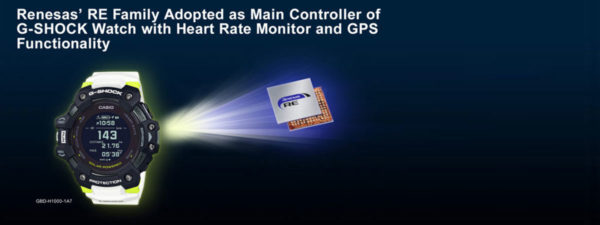Microsoft has pointed out the growing use of chat apps in healthcare. They have many applications: internal communication, public engagement, and patient outreach beyond working hours or the physical bounds of hospital operations.
The Redmond-based company believes that chat apps offers a novel opportunity to enhance the access, engagement, and quality of care. However, it also recognizes the burden that chat puts on doctors and nurses who will need to attend to patients both in person and through chat apps, during hospital working hours and often outside of these hours. Therefore, its research aimed to answer the question: How do we address the tension between the access to high-quality patient-centered care for more people and the necessary work to deliver such care for already stressed healthcare systems?
Chat is a promising way to enhance access, engagement, and quality of healthcare. It is valuable for both nurses and patients in that it enables nurses to extend care beyond limited consultations, empowers patients to get advice anywhere, and provides an important emotional and practical addition to care through peer support.
However, such outreach comes at a cost to the healthcare provider, which impacts scalability. Therefore, the core opportunity for future work is in exploring how AI and Microsoft analytics tools can be applied to reduce the burden on providers and make facilitation easier.
Microsoft’s team of researchers conducted ethnographic research at an in vitro fertilization (IVF) clinic in China. Research included observation of the nurses’ work, interviews with the nurses and doctors, and an examination of the chat messages that best illustrate the work the nurses carry out on WeChat.

According to a report released by World Bank and the World Health Organization in 2017, there are nearly 4 billion people worldwide lack access to essential healthcare. Although delivering high-quality patient-centered care is at the heart of good healthcare, this is no easy task due to both cost and scalability.
Having good communication between providers and patients is vital to quality of care and ideal healthcare outcomes. However, it can be costly and challenging to facilitate, especially in cost-conscious Global South settings, where the ratio of medical professionals to patients is often extremely low and the availability of in-person consultations is scarce.
The Global South is a region of the world that includes countries in Asia, Africa, Latin America, and the Caribbean that may have less access to resources due to a number of factors.
From its fieldwork, Microsoft found that the IVF clinic attracts a huge number of patients from across the country since it’s a top clinic in China. The result of such a high patient volume is that each patient has less than five minutes in their consultation. Given that its location is culturally and ethnically diverse in addition to being economically less developed, a number of patients who come to the clinic are of limited literacy and may speak various dialects.
Additionally, IVF treatment is also an incredibly complicated process. All these factors pose a huge communication challenge to the clinic and have a great impact on patients’ medical adherence and treatment outcomes.
In one treatment group from the study, two nurses handle an average of 170 patients daily, which does not include the patients who come in for ad hoc visits. The two nurses were often overwhelmed by the amount of communication happening simultaneously—while they were talking to one patient in person, they were interrupted by phone calls from the desk phone, their work mobile phones, and their personal mobile phones, all pinging with incoming messages. To address the communication challenge, the clinic turned to WeChat.
In order to make up for limited in-person communication, nurse-facilitated patient WeChat groups were created. There are obvious advantages that come out of creating such groups. For example, patients can now receive care from anywhere at any time. However, challenges arise too—volume of messages is one of these. The nurses receive an overwhelming amount of messages (approximately 10,000 messages per day) and often only have time to deal with these messages on their own time, during lunch breaks and after or before work.
It is simply an impossible mission to read thousands of messages! The nurses needed to develop tactics to deal with this vast number of messages. When new patients were enrolled, with their consent they were added to existing patient groups instead of creating new groups each time. This is a deliberate choice by the nurses, who have learned that the patients who have been in the groups longer, and are therefore further along in their treatment, are a useful resource for the newer patients to get additional information and peer support.
During the orientation, nurses also explicitly instructed patients to use an “@” symbol if they needed to get a direct answer from the nurse, otherwise the message would be understood as a question to the group in general. When the nurses began their workday, they first looked for messages on WeChat that were directed at them using the “@” symbol. Unlike Slack or Twitter, which separate out all the “@” messages for a user, WeChat does not have the function to separate these messages.
In WeChat, nurses are currently required to manually sift through the roughly 10,000 messages a day, looking for “@” signs. The “@” symbol stands out especially well because it is starkly different from the Chinese character set, making the symbol easy for nurses to find it quickly among large volumes of messages.
After responding to all “@” messages, the nurses skim through the interactions between patients, looking for the most active patients. According to the nurses, if a patient was particularly active one day and kept on posting one issue over and over again, it was a good indicator that this patient must be unhappy (either with the current treatment outcome or the clinic) and in distress. This required early intervention by the nurses.
For cases requiring early intervention, nurses often followed up with the patients individually in person or via a phone call. They would bring this up during the morning meeting with the doctor so that the doctor could also pay extra attention to the patient when they came in.
When it comes to privacy, nurses in the clinic are very aware of the patients’ privacy concerns of using a chat app to share information, realizing that patients in the IVF clinic are generally more cautious and sensitive. When they use the chat app, they are careful to use professional judgment and practices to determine whether a message should be sent via chat groups, one-on-one chat, or moving a conversation offline.
Microsoft’s work is the initial step in exploring chat use in the healthcare setting, and more work is needed to address data privacy concerns if chat groups are to become an established part of healthcare. It’s highly important that the use of chat apps in a healthcare setting adhere to both healthcare industry and government regulatory and compliance requirements based on local context.



